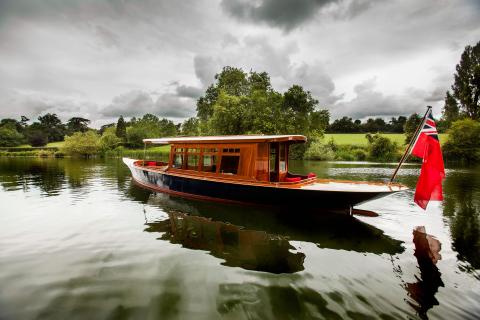The National Register of Historic Vessels (NRHV)
There are currently some 1,800 vessels on the National Register of Historic Vessels (NRHV). The database includes details of designer, builder, dimensions, construction, propulsion, service history, current location and ownership, as well as images of many of the vessels.
The Register provides an overview of the UK's extant historic vessels and can be used to identify and prioritise significant vessels that should be conserved, provide guidance to decision-makers on the allocation of funding, and give an early warning of ships 'at risk'. The database can also be a useful research tool, although confidential information about ownership is always kept secure.
Over 57% of historic vessels recorded on the NRHV are either privately owned or commercially operated. Museums and charitable trusts account for 14% of the total.
For frequently asked questions about the National Register of Historic Vessels, please click here.
The National Historic Fleet (NHF)
The National Register of Historic Vessels (NRHV) contains a sub-group of vessels - The National Historic Fleet. which are distinguished by:
- being of pre-eminent national or regional significance
- spanning the spectrum of UK maritime history
- illustrating changes in construction and technology
- meriting a higher priority for long term conservation.
There are currently 200 vessels in the National Historic Fleet and these may include vessels from the National Small Boat Register (run by the National Maritime Museum Cornwall) which are a minimum of 50 years and which fit the above criteria. The composition of the National Historic Fleet is reviewed on a regular basis.
The Overseas Watch List (OWL)
The Overseas Watch List (OWL) consists of:
- Vessels of UK significance abroad
significant vessels which were built and operated in this country, and then sold abroad. Being outside the UK they do not qualify for registration, but holding information on these and similar vessels is important as we are often consulted on them.
- Vessels previously registered on the NRHV
OWL also includes vessels previously registered on the NRHV which have now migrated abroad or have left the UK for a period of more than three consecutive months. Owners should let us know of any relocation of this kind so we can amend the status accordingly.
(Vessels on the OWL which have previously been registered on the NRHV vessels on OWL are entitled to fly our House Flags and Defaced Ensigns. Please see our Sales page.)
The National Archive of Historic Vessels (NAHV)
The National Archive of Historic Vessels (NAHV) contains details of over 700 vessels previously on the NRHV which have now been broken up or lost, sunk, or whose owners have been out of contact for a considerable period. The NAHV also contains details of some vessels which do not fit the NRHV criteria (in particular the age criterion) but which nevertheless have the potential of joining the NRHV at a later date because of exceptional historical significance.
The UK Replica List
The UK Replica List has been set up by National Historic Ships UK to provide an overview of all replica vessels which have been built in the UK or abroad to a UK design. This List is entirely independent of the National Register of Historic Vessels (NRHV) but is intended to identify replica craft for the purposes of research, public interest, filming or charters and to promote the traditional skills involved in building and sailing these vessels. A detailed explanation of the types of replica vessels can be found here and, for more information, see Chapter 8 of Conserving Historic Vessels.
The National Small Boats Register (NSBR)
If you are looking for a vessel which is 33ft and under in length - perhaps a small yacht, local boat or a dinghy - it will only be listed on the National Register of Historic Vessels if it is part of the National Historic Fleet. However, the National Maritime Museum Cornwall maintains the National Small Boat Register (NSBR). This database already contains the details of nearly 700 small craft, but is continuing to develop and grow and actively seeks suggestions for new vessels to be added.

